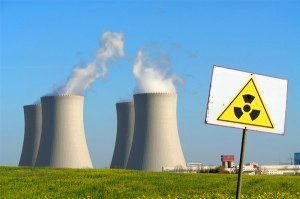Gavin Bragg – Fukushima may soon become the greatest environmental disaster site the world has ever seen. If the more than 1300 fuel rods from the badly damaged reactor 4 fuel pool, that is perched 100 feet in the air, are not brought to the ground with absolute precision it could spew out the radiation equivalent of more than 15,000 Hiroshima atomic bombs. The pool rests on a badly damaged building that could easily come down in the next earthquake, if not on its own.[1]
 Spent fuel must be kept under water because each rod is coated with zirconium alloy, which will spontaneously ignite if exposed to air. Zirconium has long been used in flash bulbs for cameras, and burns with an extremely bright hot flame.
Spent fuel must be kept under water because each rod is coated with zirconium alloy, which will spontaneously ignite if exposed to air. Zirconium has long been used in flash bulbs for cameras, and burns with an extremely bright hot flame.
“According to Arnie Gundersen, a nuclear engineer with forty years in an industry for which he once manufactured fuel rods, the ones in the Unit 4 core are bent, damaged and embrittled to the point of crumbling. Cameras have shown troubling quantities of debris in the fuel pool, which itself is damaged.
The engineering and scientific barriers to emptying the Unit Four fuel pool are unique and daunting, says Gundersen. But it must be done to 100% perfection.
Should the attempt fail, the rods could be exposed to air and catch fire, releasing horrific quantities of radiation into the atmosphere. The pool could come crashing to the ground, dumping the rods together into a pile that could fission and possibly explode. The resulting radioactive cloud would threaten the health and safety of us all.”[1] – Harvey Wasserman, senior advisor to Greenpeace USA and the Nuclear Information and Resource Service
According to long-time expert and former Department of Energy official Robert Alvarez, there is more than 85 times as much radioactive cesium on site as was released atAA Chernobyl.[1]
With Cesium-137 the main issue is that it is mistaken for potassium by living organisms, and absorbed into almost all tissues emitting gamma and beta radiation. Although it is removed by the body fairly quickly, the damage to cells and to DNA can be devastating.[2]
Of much greater concern is strontium-90, as described by the Environmental Protection Agency (EPA).
“Strontium-90 is chemically similar to calcium, and tends to deposit in bone and blood-forming tissue (bone marrow). Thus, strontium-90 is referred to as a “bone seeker.” Internal exposure to Sr-90 is linked to bone cancer, cancer of the soft tissue near the bone, and leukemia.”[3]
Not to mention the genetic mutations that can occur as a result of radiation exposure.
“Teratogenic mutations result from the exposure of fetuses (unborn children) to radiation. They can include smaller head or brain size, poorly formed eyes, abnormally slow growth, and mental retardation. Studies indicate that fetuses are most sensitive between about eight to fifteen weeks after conception. They remain somewhat less sensitive between six and twenty-five weeks old.” [4]
